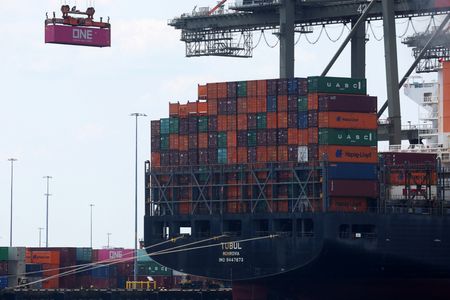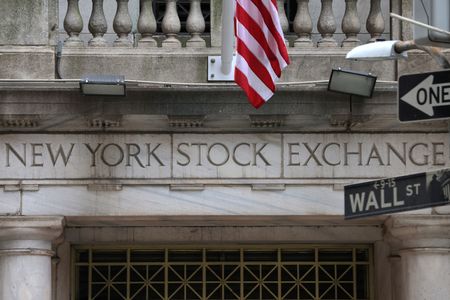By Lucia Mutikani
WASHINGTON (Reuters) – New orders for key U.S.-manufactured capital goods increased moderately in March and data for the prior month was revised lower, suggesting that business spending on equipment likely remained weak in the first quarter.
The report from the Commerce Department on Wednesday was published ahead of the release on Thursday of the government’s advance estimate of gross domestic product for the January-March quarter. The economy is expected to have delivered another quarter of strong performance, thanks to a resilient labor market that is driving consumer spending.
“From a narrow GDP accounting perspective, there should be no material impact on estimates for tomorrow’s first-quarter GDP growth,” said Conrad DeQuadros, senior economic advisor at Brean Capital. “The positive takeaway from this is that the report suggests that weakness in manufacturing does not appear to be intensifying, but neither are there signs of recovery.”
Non-defense capital goods orders excluding aircraft, a closely watched proxy for business spending plans, rose 0.2% last month, the Commerce Department’s Census Bureau said. Data for February was revised lower to show these so-called core capital goods orders advancing 0.4% instead of 0.7% as previously reported.
March’s increase was in line with economists’ expectations. Core capital goods orders gained 0.6% year-on-year in March.
Business spending on equipment has struggled in the aftermath of 525 basis points worth of interest rate hikes from the Federal Reserve since March 2022 to tame inflation. Though the U.S. central bank is expected to start lowering rates this year, the timing of the first cut is uncertain as inflation remains elevated amid the economy’s resilience. The Fed has kept its policy rate in the 5.25%-5.50% range since July.
Stocks on Wall Street were trading higher. The dollar rose against a basket of currencies. U.S. Treasury prices fell.
WEAK SHIPMENTS
Core capital goods shipments rebounded 0.2% after falling 0.6% in February. These shipments likely were unchanged when adjusted for inflation.
Non-defense capital goods orders surged 5.4% after rising 2.7% in February. But shipments of these goods slumped 1.5% after increasing by a downwardly revised 2.4% in February.
Non-defense capital goods shipments, which go into the calculation of the business spending on equipment component in the gross domestic product report, were previously reported to have risen 2.6% in February.
“While underlying capital goods shipments rose last quarter, they were probably little changed in real terms and the plunge in non-defense aircraft shipments suggests that overall business equipment investment declined,” said Stephen Brown, deputy chief North America economist at Capital Economics.
Economists polled by Reuters estimated that GDP increased at a 2.4% annualized rate in the first quarter. The economy grew at a 3.4% pace in the October-December quarter. Business spending on equipment likely contracted for a third straight quarter.
But manufacturing, which accounts for 10.4% of the economy, is stabilizing. Orders for durable goods, items ranging from toasters to aircraft meant to last three years or more, rose 2.6% in March after a downwardly revised 0.7% advance in February.
An Institute for Supply Management survey this month showed manufacturing grew for the first time in 1-1/2 years in March.
Transportation dominated the rise in orders last month, with bookings shooting up 7.7% after rising 1.8% in February. They were lifted by a 30.6% jump in civilian aircraft orders after increasing 15.6% in the prior month.
Boeing reported on its website that it had received 113 orders for commercial aircraft, a surge from just 15 in February. Orders for motor vehicles and parts rose 2.1%.
Orders for computers and electronic products increased 0.8% last month, while those for electrical equipment, appliances and components gained 0.1%.
Orders for fabricated metals rose 0.2%. But orders for primary metals fell 0.5%. Shipments of durable goods were unchanged as were inventories. Unfilled orders rebounded 0.4%.
“The big picture here is that investment remains weak, and this is unlikely to change dramatically while credit conditions remain restrictive, especially for smaller firms,” said Oliver Allen, senior U.S. economist at Pantheon Macroeconomics.
(Reporting by Lucia Mutikani; Editing by Chizu Nomiyama and Andrea Ricci)










